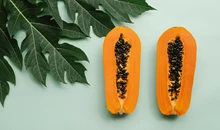
Scientists are proposing groundbreaking strategies to revolutionize crop management through bioengineering and artificial intelligence (AI). The objective is clear: to facilitate weeding by genetically modifying crops to be visually distinct from weeds, thus enabling precision weed control without resorting to herbicides. To address the challenge of distinguishing newly domesticated crops from their wild counterparts, researchers advocate for introducing specific traits into de novo crops. These traits, expressed through genetic modifications, aim to enhance visual recognition by weeding robots trained using machine learning algorithms.
The proposed alterations involve manipulating the crops' genomes to express pigments commonly found in plants, such as anthocyanins (responsible for blueberries' blue hue) and carotenoids (giving carrots their vibrant orange color). By integrating these pigments into crop genomes, scientists envision creating crops with unique colors or leaf shapes, simplifying their differentiation from surrounding weeds.
Utilizing Gene Editing Techniques
The implementation of gene editing techniques plays a pivotal role in this strategy. By selectively introducing genes for pigmentation into de novo crops, researchers aim to enhance the accuracy of weed detection by robotic systems. This approach facilitates weeding and promotes environmental sustainability by reducing reliance on herbicides.
Benefits Beyond Weed Recognition
Furthermore, the incorporation of these pigments offers additional advantages beyond weed discrimination. Anthocyanins, known for their plant defense properties, confer resistance against various stressors like herbivory and diseases. Similarly, carotenoids contribute to plant health and provide essential nutrients for human consumption.
Implications & Future Directions
Despite the potential benefits, thorough research is required to assess the impact of these genetic modifications on crop vitality. Studies must evaluate whether introduced pigments affect photosynthesis or overall plant resilience. Additionally, advancements in remote sensing technologies are essential for effective implementation, enabling weeding robots to accurately identify and remove unwanted plants.
This interdisciplinary approach underscores the potential of bioengineering to address critical challenges in modern agriculture, paving the way for a more resilient and efficient food production system.
(Source: Cell Press)











